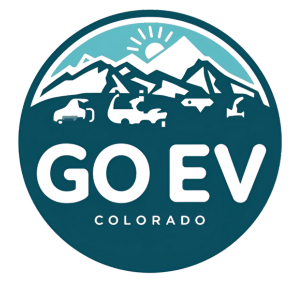EV Charger Install Guide
Your Guide to Installing a Home EV Charger in Colorado
So, you’ve joined the electric revolution—or maybe you’re just starting to consider it.
Whether you’re already cruising around in your Tesla, Rivian, or Ford Lightning, or simply dreaming of saying goodbye to gas stations forever, one thing is certain: you’ll need a reliable way to charge at home.
Welcome to the world of EV charging at home. Let’s break down what you need to know about chargers, costs, safety, and how Go EV Colorado can help you get set up the right way.
1. What’s the Difference Between Level 1, Level 2, and Level 3 Chargers?
Level 1 EV Charger
- Plugs into a standard 120V household outlet.
- Adds about 1–2 miles of range per hour.
- Very slow and can strain your outlet and circuit.
Level 2 EV Charger
- Requires a dedicated 240V circuit (similar to an electric dryer).
- Adds 10–40+ miles of range per hour.
- The best option for daily home charging.
Level 3 EV Charger (DC Fast Charging)
- Commonly found at public charging stations, not suitable for homes.
- Can charge 60–80% in 20–40 minutes.
- Requires high-voltage infrastructure.
2. Why Install a 240V Level 2 Charger at Home?
Public chargers are great in a pinch, but relying on them every day means extra trips, longer waits, and less convenience. A Level 2 home charger solves that.
Using a standard outlet (Level 1) isn’t just slow—it can actually be unsafe over time. Overloaded circuits and GFCI outlets can overheat, leading to melted wiring or even fire risks.
A properly installed 240V Level 2 charger is safer, faster, and protects your home’s electrical system.
3. What Factors Affect the Cost of EV Charger Installation?
Several variables determine the total cost:
- Load Calculation: Required in most Colorado jurisdictions to ensure your panel can handle the new demand.
- Main Panel Size: If your panel can’t handle the load, it may need upgrading.
- Panel Manufacturer: Some panels require more expensive breakers or adapters.
- Wiring Distance & Complexity: Long conduit runs or routing through finished walls increase labor.
- Load-Shedding Equipment: Sometimes used as a cost-effective alternative to a full panel upgrade, depending on local codes.
⚠️ Beware of contractors who quote over the phone without seeing your setup. On-site inspections are the only way to get an accurate estimate.
4. Should You Hire a Licensed Electrician?
Yes—always. Here’s why:
- Safety: Working inside a live panel is dangerous.
- Code Compliance: Installations must meet NEC Article 625 standards.
- Permitting: A licensed electrician handles the paperwork.
- Insurance Protection: Licensed, insured contractors protect you in case of injury or property damage.
5. Do You Need a Permit for a Level 2 Charger?
Yes. A permit is always required. Skipping it can result in:
- Failed insurance claims
- Issues during home inspections or sales
- Fines or removal orders from your city or county
6. Where Are Level 2 Chargers Usually Installed?
- Homes: Garages and carports are most common.
- Apartments or Commercial Buildings: Shared garages, parking structures, or surface lots.
At Go EV Colorado, we install leading brands like Tesla, ChargePoint, Siemens, Span, Emporia, and more.
7. How Long Does Installation Take?
- Simple Installs: 2–4 hours on site.
- Complex Installs: 1–3 days if panel upgrades or long wiring runs are needed.
- Full Process: Includes site assessment, permitting, materials, installation, and inspection.
8. Does an EV Charger Add Home Value?
Yes. Adding a Level 2 charger not only makes daily life easier, it can boost resale value.
- Building Codes: Many new homes in Colorado must already be “EV-ready.”
- Buyer Demand: More homebuyers want properties with charging built in.
9. Are There Tax Credits or Rebates in Colorado?
Yes—installing a home EV charger can save you money through incentives:
- Federal Tax Credit: Up to 30% of installation costs (max $1,000 for residential).
- State & Utility Rebates: Programs through Xcel Energy and others may provide up to $1,300 back.
Go EV Colorado helps customers navigate rebates and apply for savings.
10. How to Get Started
We make the process simple:
- In-home assessment
- Load calculation & code compliance check
- Permit submission
- Equipment recommendation & installation
- Final inspection & documentation
With Go EV Colorado, you’ll have peace of mind knowing your charger was installed safely, efficiently, and with future needs in mind.
📞 Ready to install your EV charger? Contact Go EV Colorado today to schedule your consultation.

